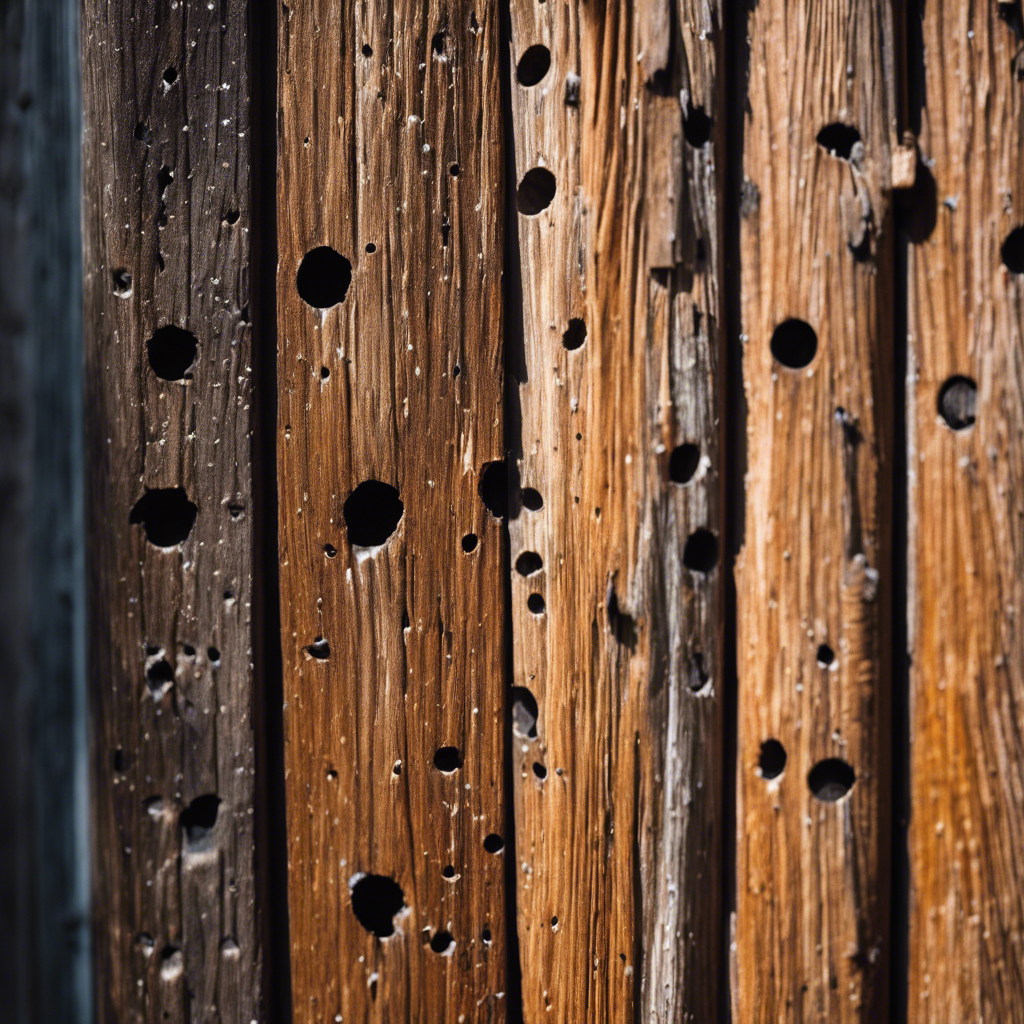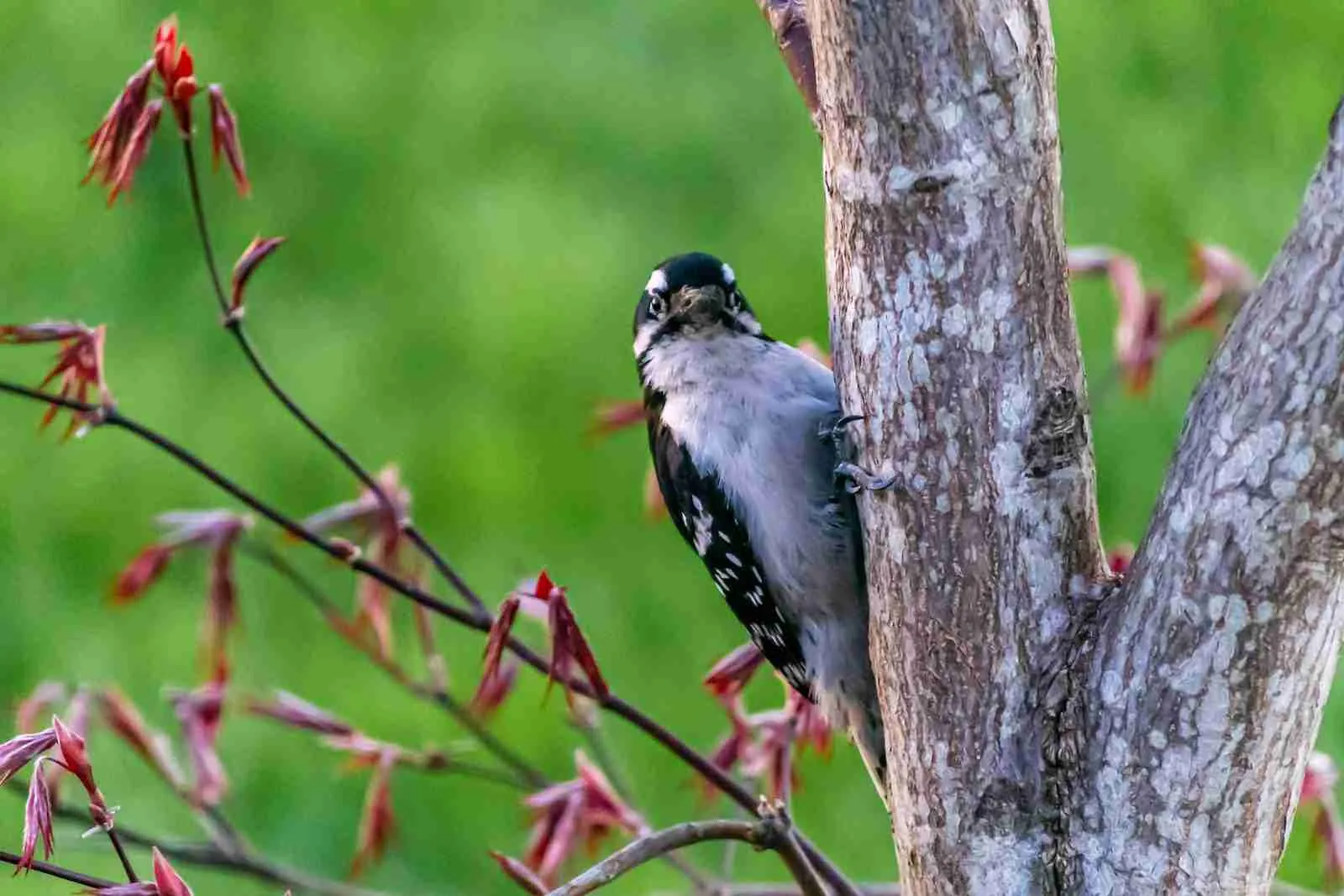In my experience as a wildlife specialist, I’ve seen the havoc woodpeckers can wreak on homes. The rhythmic drumming that once signified nature’s symphony now echoes as a homeowner’s alarm. Witnessing the debris of my own siding, I understood the need for swift action.
Beyond the superficial scars, the holes spoke of potential hazards—moisture invasion, pest access, and compromised home integrity. I believe that knowledge is the foundation of prevention. By applying my expertise, I advised communities on deterrents and repairs, turning the tide against these feathered carpenters and protecting our cherished homes from their relentless tap, tap, tap.
Key Takeaways
- Woodpeckers can cause both cosmetic and structural damage to the exterior of a house, including creating holes and trenches in the siding.
- The continuous pecking and nesting habits of woodpeckers can lead to moisture ingress, water damage, mold, and insect infestations.
- The compromised insulation due to woodpecker holes can reduce energy efficiency and increase heating and cooling expenses.
- Woodpecker damage can attract additional pests, such as leafcutter bees and wood-boring insects, and provide nesting sites for smaller wildlife. Prompt action and deterrent measures are necessary to mitigate these risks.
Exterior Cosmetic Damage

Woodpeckers can significantly mar your house’s exterior by drilling foraging holes, which not only detract from its aesthetic appeal but may also compromise its structural integrity. These birds create small, deep holes in siding while searching for insects, leading to cosmetic damage. Additionally, their drumming behavior can result in wider, cone-shaped depressions.
Nesting habits may cause deep, round holes 3 to 5 cm in diameter, further impacting your home’s facade. Damage manifests as long trenches or rows of holes, undermining the cosmetic appeal and necessitating repair to maintain both appearance and structure. Pest control measures may be required to address and prevent woodpecker damage to homes, particularly to vulnerable trim boards.
It’s essential to take prompt action when woodpeckers cause damage to your property.
Structural Compromises

When woodpeckers repeatedly drill into your home’s siding, they risk compromising its structural integrity by creating openings that weaken the material and leave it susceptible to further damage. These breaches can lead to:
- Structural Damage:
- Continuous pecking creates holes that can allow moisture ingress, leading to water damage and mold.
- Nesting holes may grow larger over time, further degrading the wooden siding.
- Secondary Issues:
- Insect damage can intensify as woodpeckers create entry points.
- Other wildlife may be attracted to the building in the vicinity.
Filling holes with wood putty can be a temporary fix, but for extensive structural damage caused by woodpeckers, you might need to install aluminum flashing or seek a depredation permit for a long-term solution.
Risk to Insulation Integrity

Compromised insulation integrity, resulting from holes drilled by woodpeckers, can significantly reduce your home’s energy efficiency and lead to increased heating and cooling expenses. Woodpeckers pecking at your siding not only mar its appearance, but these holes are usually built near the damaged area, further exposing it to the elements. This exposure allows moisture to seep in, potentially resulting in mold and mildew, and undermines the insulation’s ability to maintain a stable indoor temperature.
To discourage woodpeckers, consider using insecticides or wood preservatives to eliminate their food source—wood-boring insects like carpenter bees. Nuisance woodpeckers often feed on these pests, so by treating the wood with the enlarging of holes by drilling, you can deter them from causing further damage to your insulation and home.
Attracting Additional Pests

While addressing woodpecker damage, it’s also crucial to consider how these breaches in your home’s exterior can invite other pests, exacerbating the problem. Small holes and cavities created by woodpeckers can become nesting sites for various insects:
- Leafcutter bees may utilize wood particles for their nests.
- Insects that feed on vegetable matter can find a hospitable environment.
These cavities can also act as cavity-type nest boxes for smaller wildlife, attracting additional pests that seek shelter in the crevices within trees and the ground. Moreover, these pests could be drawn to the same wood-boring insects woodpeckers feed on.
Mitigating these risks involves repairing the damage promptly and deterring further woodpecker activity without harming these protected birds or other wildlife.
Frequently Asked Questions
What Does Woodpecker Damage Look Like on a House?
Woodpecker damage on your house appears as small, deep foraging holes, shallow drumming clusters, or larger nesting cavities, which can lead to further issues like insect infestation and water damage.
Should I Be Concerned About a Woodpecker Pecking at My House?
Yes, you should be concerned if a woodpecker is pecking at your house. It may cause costly damage, invite infestations, and lead to structural issues that need immediate attention and appropriate deterrent measures.
How Do I Fix a Woodpecker Damage on My House?
To fix woodpecker damage, you’ll need to fill the holes with wood filler, sand the area smooth, and repaint to match your house’s exterior, preventing further structural and cosmetic issues.
How Destructive Are Woodpeckers?
Woodpeckers can be quite destructive, drilling into your home’s siding and creating openings for pests and water, leading to infestations, mold, and internal structural damage if not promptly and properly addressed.
Conclusion
In conclusion, you must vigilantly protect your home from woodpeckers. Their pecking can’t only mar your house’s exterior but also compromise structural integrity, damage insulation, and attract other pests.
Implementing deterrents and making informed material choices for your home are crucial steps in mitigating these risks. Stay proactive to safeguard your property against the persistent threat posed by these industrious birds.

An avid ornithologist, zoologist and biologist with an unwavering passion for birds and wild animals.
Dr. Wilson’s journey in ornithology began in childhood and led him to obtain a Ph.D. in Ornithology from the prestigious Avian Research Institute. He has worked closely with renowned experts in the field and conducted extensive research and field studies globally.




